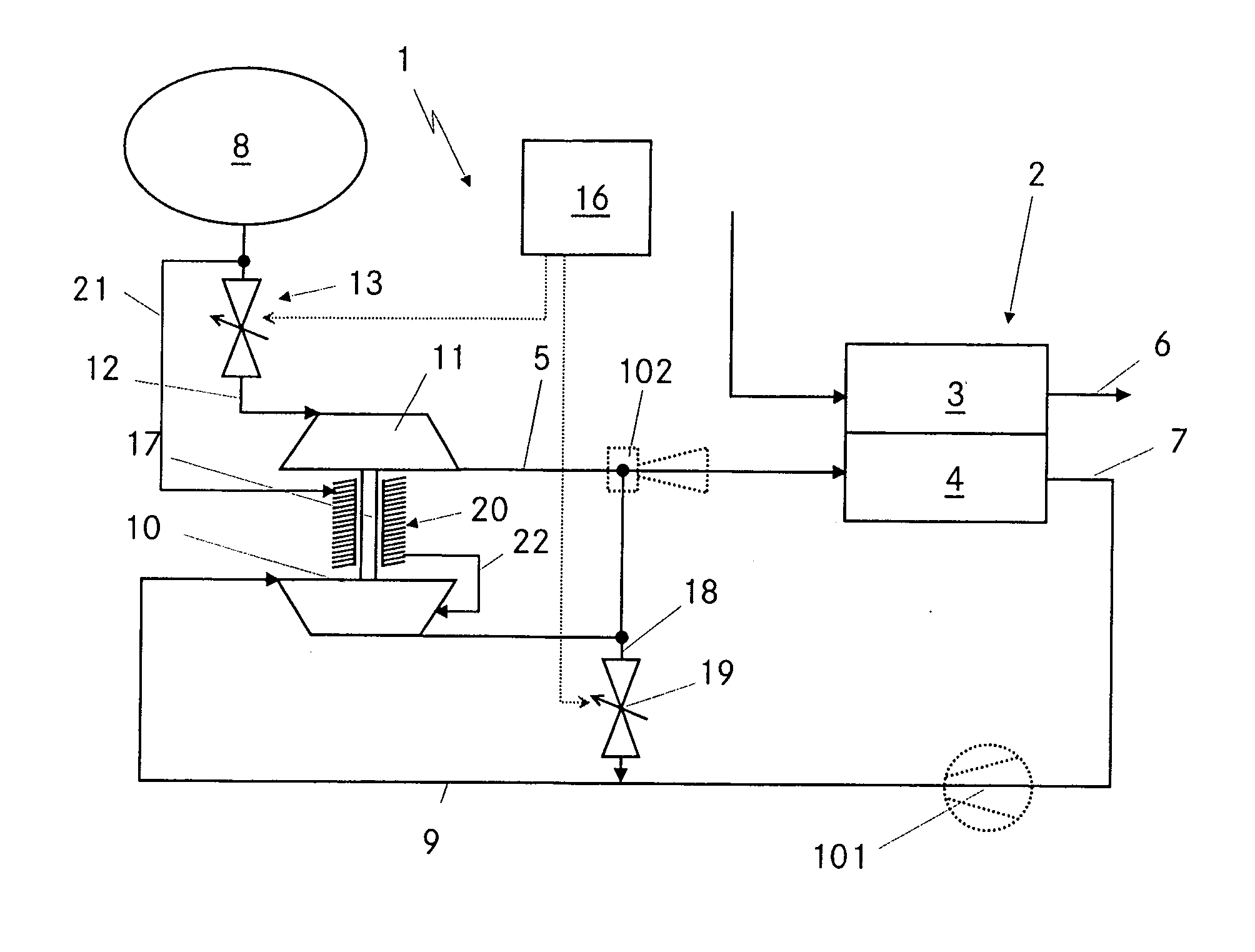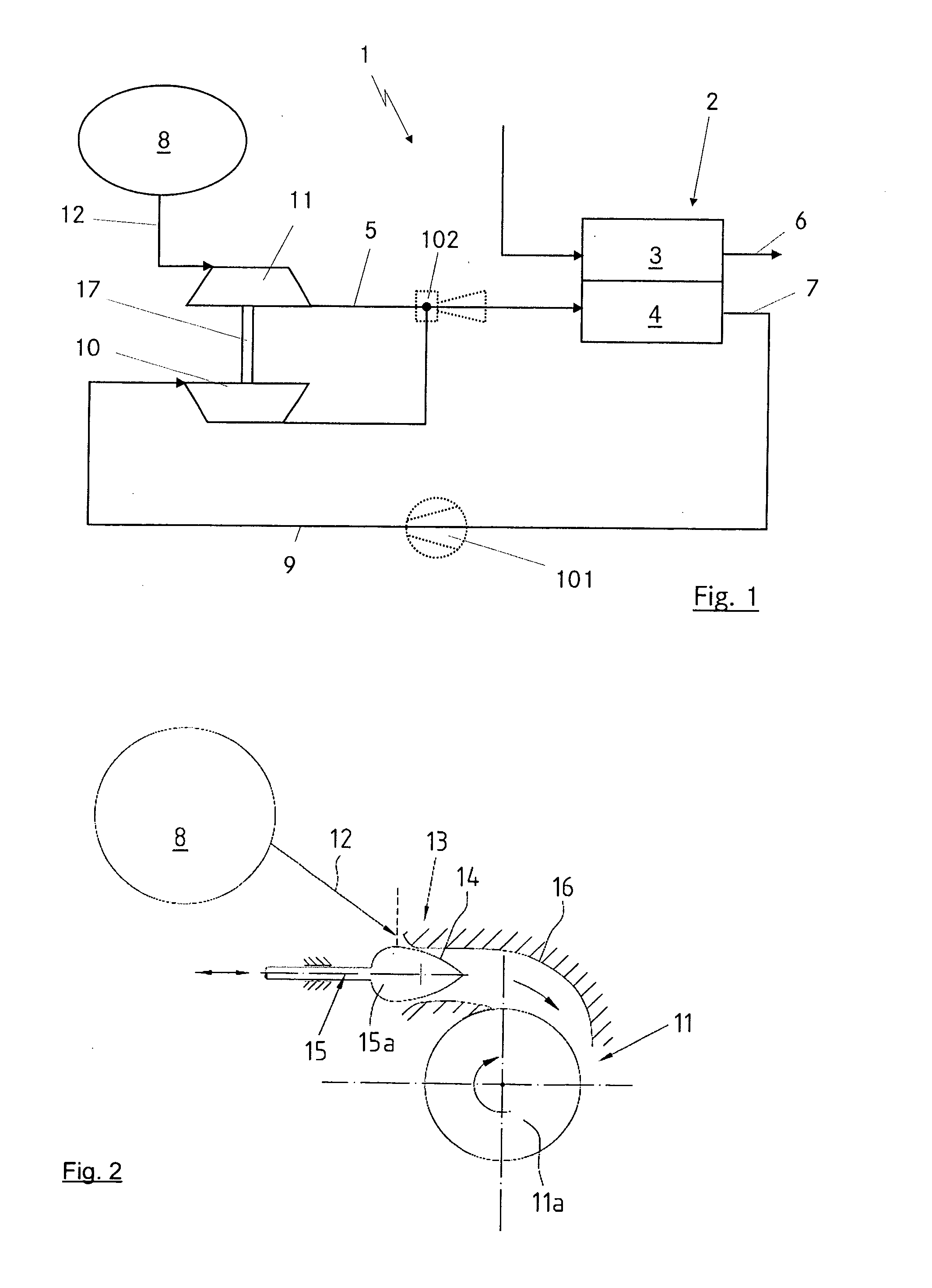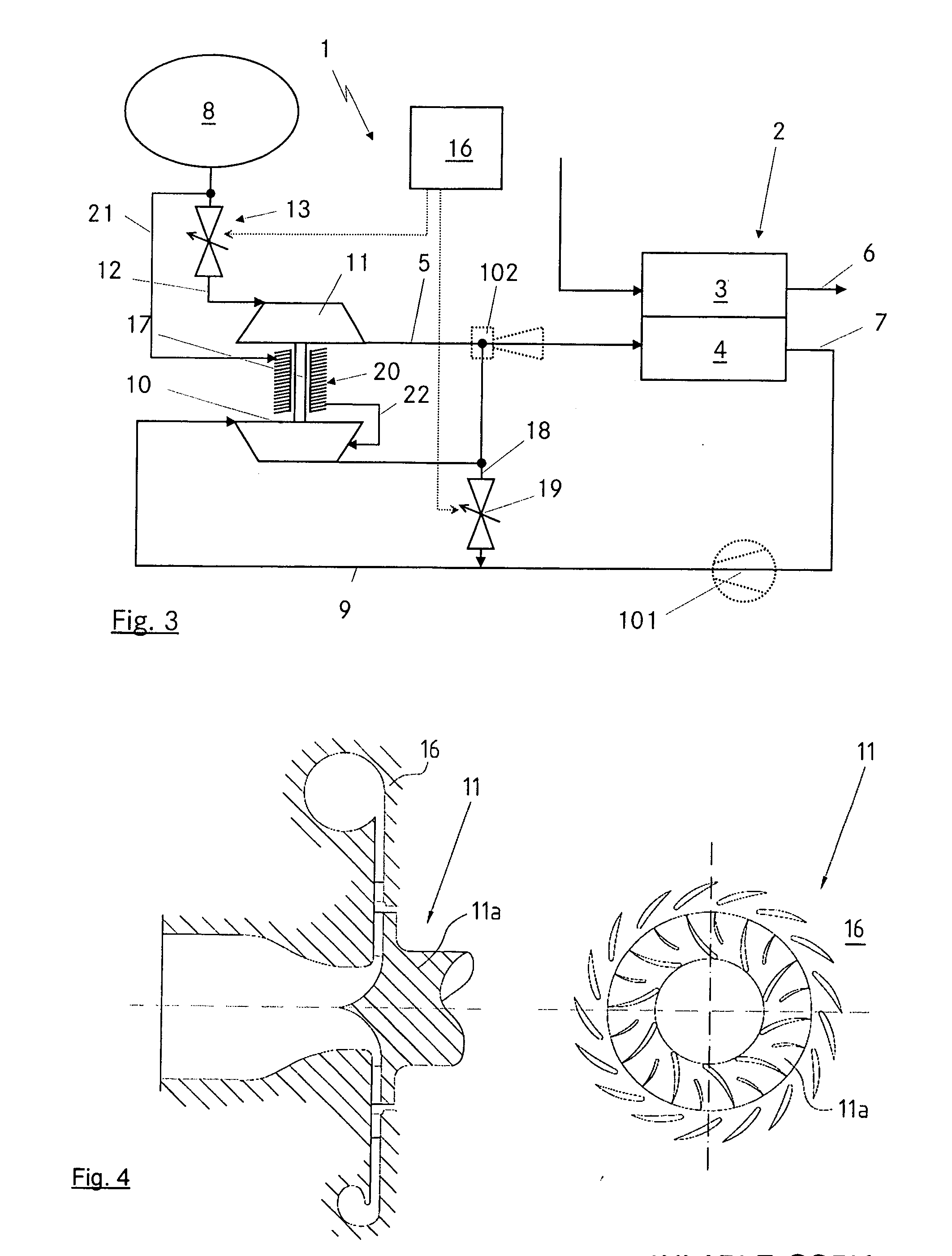Fuel cell system having a fuel cell, a hydrogen storage tank, and an anode circuit
- Summary
- Abstract
- Description
- Claims
- Application Information
AI Technical Summary
Benefits of technology
Problems solved by technology
Method used
Image
Examples
Embodiment Construction
[0020] A fuel cell system 1 is shown exemplarily in FIG. 1. Fuel cell unit 2 contained therein includes a plurality of fuel cells which are preferably configured in a stack, and in which case one or more fuel cell stacks may be electrically connected in series and / or in parallel, in order to supply a desired voltage and current level for electrical consumers. Fuel cell unit 2 is illustrated in a simplified representation by a cathode 3 and an anode 4. Cathode 3 is supplied in a manner known per se via a cathode-side supply line with an oxidizing agent, for example air, while anode 4 is supplied via an anode-side supply line 5 with a reducing agent, typically hydrogen. The reducing agents and oxidizing agents react with one another in the fuel cells of fuel cell unit 2, and reaction products are purged via cathode-side and anode-side purging lines 6, 7. The reaction, i.e. conversion, produces an electrical voltage in fuel cell unit 2 that may be used to supply electrical consumers, i...
PUM
 Login to View More
Login to View More Abstract
Description
Claims
Application Information
 Login to View More
Login to View More - R&D
- Intellectual Property
- Life Sciences
- Materials
- Tech Scout
- Unparalleled Data Quality
- Higher Quality Content
- 60% Fewer Hallucinations
Browse by: Latest US Patents, China's latest patents, Technical Efficacy Thesaurus, Application Domain, Technology Topic, Popular Technical Reports.
© 2025 PatSnap. All rights reserved.Legal|Privacy policy|Modern Slavery Act Transparency Statement|Sitemap|About US| Contact US: help@patsnap.com



